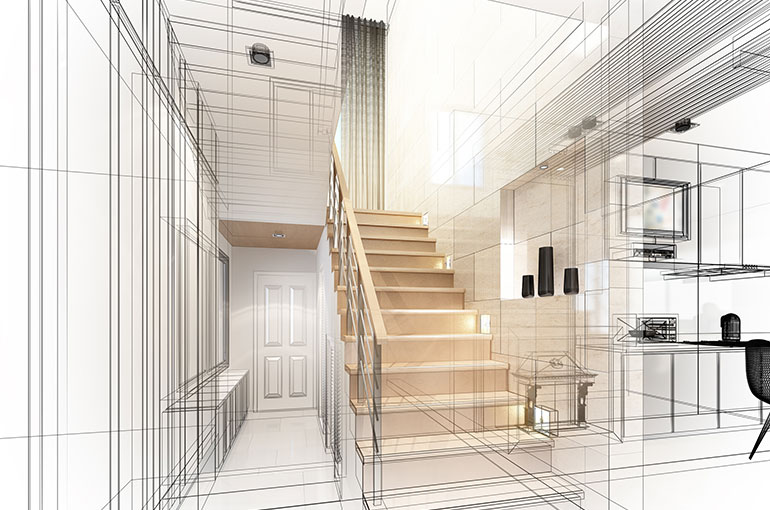The Creative Process Behind Effective Projects from CDA Architects
The Creative Process Behind Effective Projects from CDA Architects
Blog Article
An Extensive Summary of Architectural Styles and Their Influence on Modern City Preparation and Development
Building styles have long served as a mirror to the societal values and technical advancements of their time, playing a vital duty in forming modern-day city planning and growth. From the magnificence of Neoclassicism to the practical strategy of Brutalism, each design has introduced distinct concepts that affect urban appearances and functionality.
Historic Overview of Architectural Styles

As cultures transitioned with the Middle Ages, Gothic design emerged, defined by its verticality and elaborate outlining, mirroring the spiritual desires of the era. The Renaissance noted a resurgence of timeless perfects, merging art and style in innovative ways that influenced succeeding styles throughout Europe.

Today, architectural styles proceed to progress, driven by globalization and sustainability problems, mirroring a vibrant interaction between heritage and advancement. This historic review underscores the significance of design as a mirror of social development and as a catalyst for metropolitan advancement.
Key Architectural Styles Explained
The variety of architectural styles reflects the myriad impacts that form our constructed atmosphere, each personifying distinctive attributes and cultural significances. Secret architectural designs include Classical, Gothic, Baroque, Innovation, and Postmodernism, each representing special historic contexts and visual ideologies.
Timeless architecture, rooted in ancient Greece and Rome, emphasizes balance, proportion, and the use of columns (cda architects). On the other hand, Gothic architecture, flourishing in the Center Ages, is characterized by sharp arcs, ribbed vaults, and flying buttresses, developing an ethereal top quality in sanctuaries. Baroque style, arising in the 17th century, is noted by grandeur, sophisticated ornamentation, and a vibrant interplay of light and darkness
Innovation, which acquired momentum in the very early 20th century, prioritizes feature over type, utilizing brand-new materials like steel and glass to produce minimalist structures. Postmodernism, responding against the austerity of Innovation, embraces eclecticism and historic recommendation, typically integrating spirited elements and irony.

Impact on Urban Planning
In forming the development of cities, building designs considerably influence urban preparation choices. The option of building style frequently determines the looks, capability, and general character of metropolitan environments.
Furthermore, architectural designs can influence zoning regulations and land use policies. Urban organizers should consider the dominating building patterns when designing districts, guaranteeing that new advancements integrate with existing structures. This factor to consider fosters natural urban landscapes and boosts area identity.
The implementation of specific architectural styles can likewise affect socioeconomic aspects within a city. For instance, premium contemporary designs might draw in upscale citizens and services, causing gentrification, while Find Out More extra inexpensive real estate solutions may focus on functional and sustainable designs to fit diverse populations. Eventually, the interplay in between building designs and urban preparation produces vibrant cities that reflect both historical context and modern requirements, forming the lived experiences of their residents
Sustainability and Modern Design
Architectural designs play a crucial function in resolving modern difficulties, particularly in the realm of sustainability. As metropolitan areas increase and ecological worries heighten, modern design significantly welcomes sustainable layout principles that focus on power performance, source preservation, and minimal eco-friendly impact.
Contemporary building motions, such as biophilic style and eco-friendly design, supporter for structures that balance with their environments, making use of all-natural materials and advertising biodiversity. These styles usually integrate renewable energy resources, such as solar panels and wind turbines, to reduce dependence on fossil fuels and reduced carbon footprints.
In addition, the assimilation of advanced modern technologies, such as clever structure look at this now systems, boosts energy monitoring, maximizing resource usage while making sure passenger convenience. Cutting-edge water administration techniques, including rain harvesting and greywater find out recycling, additional add to sustainable metropolitan environments.
Especially, sustainability prolongs beyond ecological issues; it encompasses social and financial measurements. By cultivating community well-being and promoting inclusivity, modern architectural styles align with lasting growth objectives. The evolution of architectural techniques proceeds to shape resilient cities that not just meet the needs of the present yet additionally guard the future for generations to come.
Area Interaction in Style
Neighborhood involvement in design acts as a vital bridge in between engineers and the populations they offer, making sure that the developed atmosphere shows the demands and desires of its customers. This collective process invites area participants to contribute their insights and preferences, cultivating a sense of possession and responsibility towards the spaces they populate.
Efficient community involvement employs various methods, such as workshops, surveys, and public online forums, to collect varied perspectives. These approaches help with a two-way dialogue, allowing designers to understand neighborhood contexts while equipping citizens to voice their issues and needs. This inclusivity not only boosts the layout top quality however also promotes social equity by addressing the one-of-a-kind challenges encountered by marginalized groups.
In addition, neighborhood involvement can lead to innovative options that may not emerge in a conventional style process. By integrating regional expertise and social values, designers can produce rooms that resonate even more deeply with users, boosting functionality and sustainability. Eventually, prioritizing community engagement in layout procedures causes atmospheres that support social interactions, assistance well-being, and strengthen neighborhood connections, therefore playing an essential function in forming modern-day city landscapes.
Final Thought
Building designs have exceptionally influenced contemporary city planning and advancement, reflecting advancing social and technical contexts. As cities proceed to expand and adjust, the recurring discussion between architectural heritage and modern layout principles will certainly remain necessary in developing comprehensive, dynamic rooms that enhance quality of life and promote social equity.
Report this page